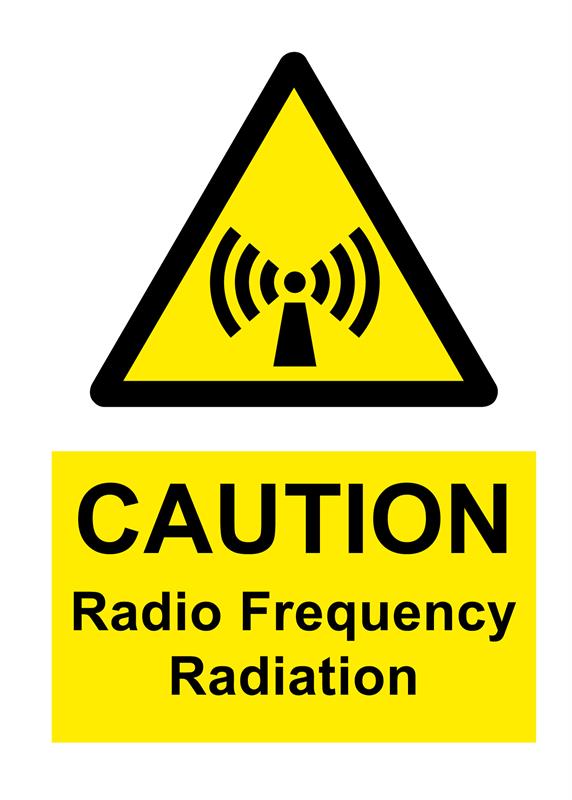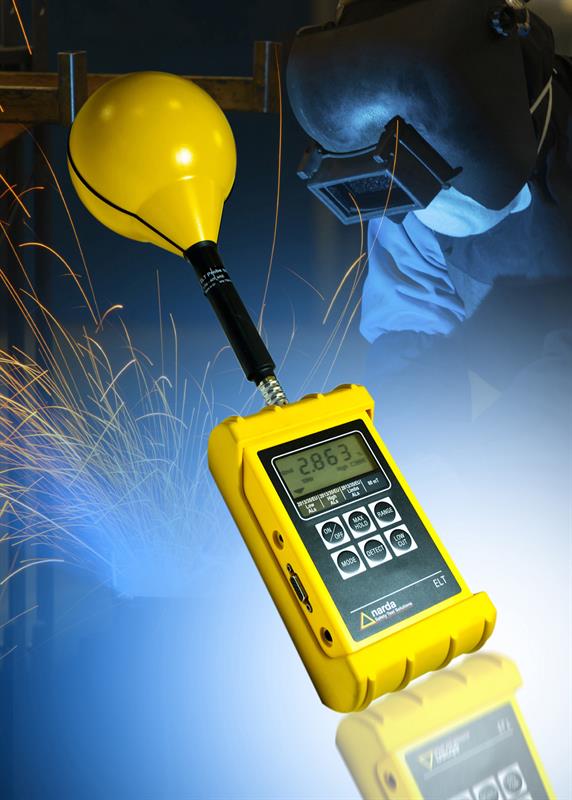Health effects
What are EMFs and why are they a problem? An EMF is a type of non-ionising radiation created whenever an item of electrical or electronic equipment is used. EMFs can be static electric, static magnetic or time-varying electric, magnetic or electromagnetic (radio wave) in nature, with frequencies up to 300GHz. While there have been suggestions of possible long-term health effects from exposure to EMFs, this area is specifically excluded from the regulations as there is currently no conclusive evidence of any causal relationship.
However, the regulations do cover short-term direct biophysical effects, which are scientifically well established, as well as indirect effects such as interference with cardiac pacemakers.
The direct biophysical effects are broadly categorised as thermal effects – the heating of tissue through absorption of energy from EMFs – and non-thermal effects, such as the stimulation of muscles, nerves or sensory organs. Thermal effects tend to occur at frequencies of more than 100kHz, while non-thermal effects are characteristic of lower frequencies, typically less than 10MHz. Between 100kHz and 10MHz, both thermal and non-thermal effects may be evident.
Risk assessment
The CEMFAW Regulations require every employer to carry out an EMF risk assessment. In most cases, no further action will be necessary, but wherever an industrial process uses EMFs or where equipment operates at high voltage or current levels in excess of 100A, health-and-safety dutyholders may need to take additional steps in order to protect workers. For example, significant EMFs can be generated in the electricity-supply, railway and healthcare sectors (although MRI scanners are specifically exempted). Broadcast and telecommunications workplaces are other areas where strong fields occur routinely, but here the equipment is usually designed to generate external EMFs intentionally, so all major operators are well aware of the issue and have appropriate measures in place.
Exposure limits
Dutyholders must assess the levels of EMF to which their workers may be exposed against a set of specific thresholds – Action Levels (ALs) and Exposure Limit Values (ELVs). ALs are not limits, but levels which if exceeded indicate that further action is necessary; typically by introducing measures to reduce exposure. These could be inexpensive, such as the use of signs and floor markings, or changes to working practice, such as limiting the duration and intensity of the exposure. ELVs, meanwhile, are limits that generally should not be exceeded.

For low frequency exposures, the resulting magnetic field can be significant so, at less than 10MHz, the regulations list Low and High ALs and, for magnetic fields, a higher level for exposure of limbs. Furthermore, at less than 400Hz, ELVs are listed for sensory effects as well as health effects. ‘Sensory effects ELVs’ are those, which if exceeded, might see workers subjected to transient disturbed sensory perceptions and minor changes in brain functions. ‘Health effects ELVs’ are those above which workers might experience symptoms such as heating or stimulation of nerve and muscle tissue.
The regulations permit sensory effect ELVs to be exceeded temporarily, but the health effects ELVs may only be exceeded under the terms of the derogations, or exemptions.
Since sensory ELVs may be exceeded, workers need to be aware of the possible effects and how to reduce their exposure, so training is important. The regulations therefore require employers to give exposed workers the necessary information and training, particularly relating to the outcome of the risk assessment, the measures taken by the employer, safe working practices, the detection of adverse effects and the circumstances in which workers are entitled to health checks.
Measurements
If compliance with the regulations cannot be determined reliably on the basis of readily accessible information, it will be necessary to carry out measurements and/or perform calculations, except for those activities specifically exempted.
Some quick and simple measurements could save dutyholders a great deal of time by avoiding the potential difficulties of obtaining accurate and reliable information from equipment manufacturers.
For those organisations using low-frequency/high-current industrial equipment, Narda Safety Test Solutions’ ELT-400 Model 107 magnetic field strength meter provides an easy means of proving compliance with the CEMFAW Regulations’ Action Levels. The hand-held instrument is simple to operate and displays magnetic field strengths as a percentage of the ‘High’, ‘Low’ and ‘Limb’ Action Levels defined in the regulations.

Workers at particular risk
For most employers, the biggest impact of the regulations is likely to concern ‘workers at particular risk’. Dutyholders would be well advised to focus much of their attention on this aspect of the legislation and ensure that it is properly addressed by the risk assessment and any training. This group includes pregnant employees and workers with active implanted or body-worn medical devices, such as pacemakers or insulin pumps, or passive implanted medical devices, including artificial joints, pins and plates. These workers may not be adequately protected by the ALs and ELVs in the regulations as interference or other adverse effects may arise from much lower field strengths.
In such cases, the official guidance recommends applying the EMF exposure limits set out in the ‘general public’ guidelines formulated by the International Commission on Non-Ionizing Radiation Protection (ICNIRP). However, these levels are relatively restrictive and, in some industrial settings, may prove to be extremely challenging for employers to achieve.
It is possible that, in some circumstances, even ICNIRP public levels may not provide adequate protection for workers with active implants, so if in any doubt, employers should seek specific advice from an individual’s care team or device manufacturer.
Magnetic field strength meters provide an easy means of proving compliance with the CEMFAW Regulations
It is also important that all workers who operate industrial equipment should receive training to make them aware of the need to notify their manager if they become ‘at particular risk’ in the future; for example, if they become pregnant or have a medical implant fitted. Procedures can then be modified where necessary to minimise the risk of EMF exposure.
Practical assistance
Assistance with the risk-assessment process and implementation of the regulations can be found in the Health & Safety Executive’s HSG281 guidance document, as well as the official Practical Guide to the EMF Directive.
Document HSG281 includes a list of low-risk EMF sources that will not generally exceed exposure limits, a list of EMF sources that may pose a risk to all workers and a list of specific sources of EMF that may affect workers at particular risk. Further assistance is available in the form of specialist training courses.
Author profile
Hugo Bibby is Link Microtek’s technical director.













